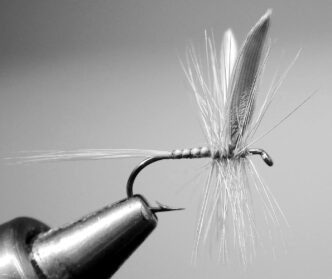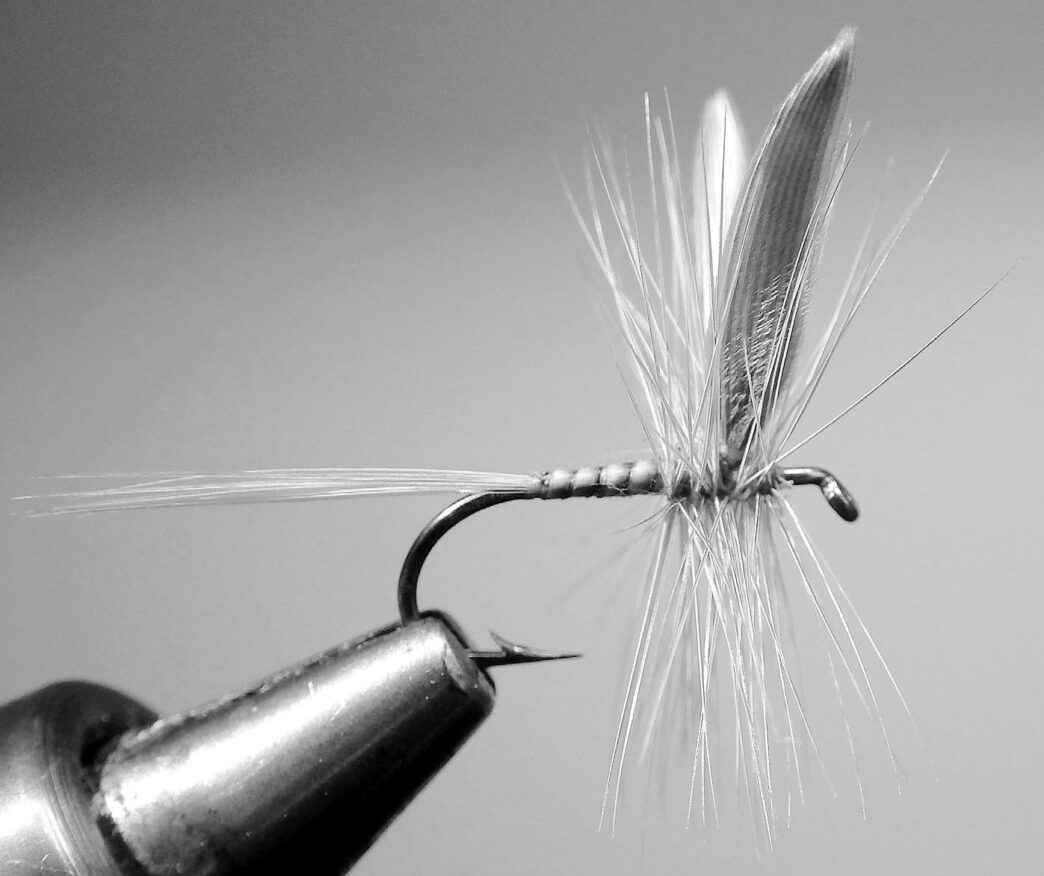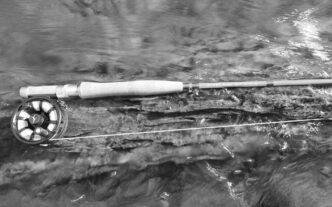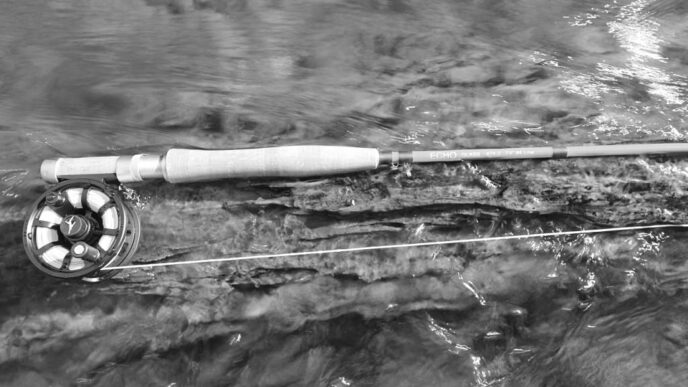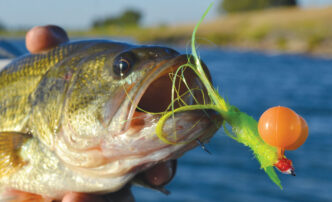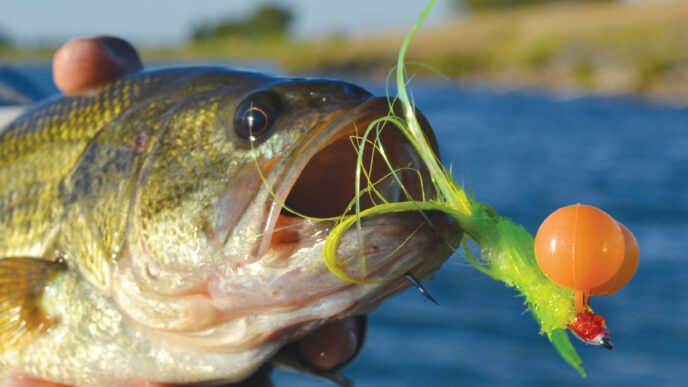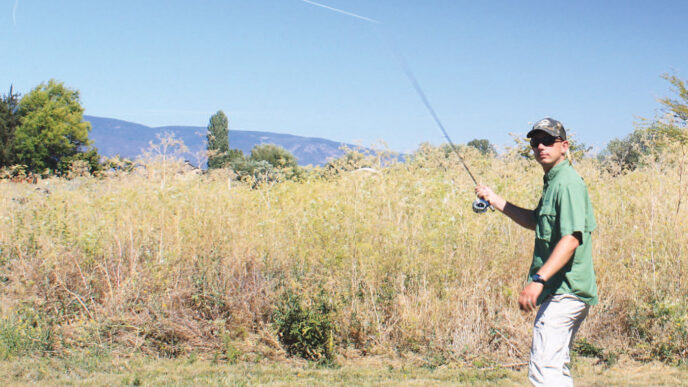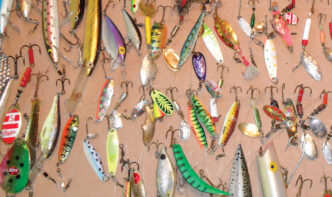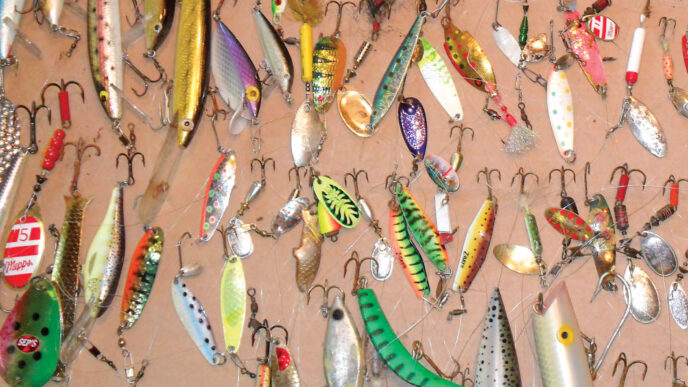In “Looking Through the Other End of the Telescope” in the July/August 2013 issue of California Fly Fisher, Larry Kenney chronicled his transformation from a parochial West Coast fly fisher to a more open-minded angler who, despite overcoming “regional prejudices” nevertheless concluded, “I’ll still look to California as the wellspring of everything I love about fly fishing.” Here’s another look at “regional prejudices,” broadening points of view, and West Coast angling.
“As fly fishers,” Larry Kenney writes, “we’re branded by our angling roots, a mark that’s visible on our flies and tackle, by our lore, and by the waters that we fish.” And when it comes to roots, he knows where he stands. “I’m a California guy,” he declares.
I admire that sort of self-knowledge, as well as his ability to expand his perspectives from such a secure base, not least because it’s something to which I could never lay claim. But I think there’s something to be said for being a little less absolute about the place where one stands, what fly fishing is, and where to find its resources and rewards.
I’m not talking about being rootless, but if we’re going to use the metaphor of roots, I want to praise the virtues of the rhizome, a “horizontal subterranean plant stem” that “produces shoots above and roots below” and that is “distinguished from a true root in possessing buds” and “nodes,” according to the people who make up the definitions in Webster’s. That’s as compared with the taproot, “a primary root that grows vertically downward.” Rhizomes find nourishment and opportunities to flourish in multiple places and in multiple ways, sending up shoots and down roots in different places at the same time.
That has been my experience as an angler and more generally in life — Bud “possessing buds,” I guess. But that experience is perhaps a somewhat idiosyncratic result of chance — where life has taken me — and education.
To start with, I’m bicoastal — I grew up and went to school in the Mysterious East (rural New York, where I dunked worms and threw Dardevle spoons with a spinning rod as a kid, and college and grad school in Connecticut, where I didn’t fish at all ), returned to fishing as a backpacker while teaching in California, started fly fishing while teaching in Oregon (where it is high culture), fished as much as I could (which wasn’t enough — it never is) in California when I moved back there, and for the past 10 years have been living in the suburbs of New York City, two hours from the Catskills and “the cradle of American fly fishing.” (No, those interviews for the “California Confluences” column aren’t done in person. We use e-mail.)
In the East, I’m a “West Coast guy.” That means several different things. Unlike most people with whom I now hang out, I came to fly fishing late, and it wasn’t on East Coast rivers. So unlike some of my friends, I definitely haven’t been “baptized in the Willowemoc,” to use Larry’s vivid phrase, although I have fallen into it a couple of times. When I reminisce about fishing my home waters, I’m talking about the Deschutes, and my approach to fishing the “little rivers” of the Catskills, as angling historian Mac Francis calls them, tends sometimes toward befuddlement when I wade into the long, slow-moving pools on these low-gradient streams and see no obvious structure to fish. And as a fly tyer, I still gravitate toward “West Coast” patterns — Cutter’s E/C Caddis is a favorite, and it’s sometimes viewed with amazement by those with whom I swap flies.
However, because I publish and edit the newsletter of the Catskill Fly Tyers Guild, whose mission is in part to “preserve, protect and enhance the Catskill fly tying heritage,” I tend to hang out with a lot of traditionalists, including cane-rod purists (and builders) and folks who refuse to tie with anything other than the natural materials available to the Darbees and the Dettes and back to the sainted Theodore Gordon himself, despite the fact that the Darbees, Dettes, and Gordon himself were pragmatists who used anything they could find that would make an effective fly. Foam flies routinely are anathematized by guild members, and at a recent meeting, I listened as one member grilled another at length about his reasons for going so far as actually to fish beadhead nymphs. Gasp.
That sort of thing might tend to confirm the stereotype of Eastern anglers as oriented toward the angling past, except that when they actually go out fishing, a lot of these putative traditionalists turn out to use pretty much the same modern patterns that you might find on any American river — parachutes and CDC or snowshoe-rabbit flies, honking big streamers, when appropriate, X-Caddises, and more. That group includes people such as Joe Fox, the great-grandson of Walt and Winnie Dette, who’s the current proprietor, with his grandmother Mary, of the Dette Fly Shop and the host of the wonderfully named online forum Sparse Grey Matter (http://www.sparsegreymatter.com). That site is frequented largely by traditionalists, but while many are from the East, others are from all over the United States, with a rather active contingent from Sweden, where the rivers resemble those in the Catskills and where the stunningly skilled tyers appreciate the aesthetics of the Catskill style of dry fly. That ubiquity and transnationalism is one way in which the whole East-West dichotomy, and indeed any geographical dichotomy, breaks down.
Scott Sadil raises the specter of the Internet’s homogenization of tying styles in his “At the Vise” column in this issue, but it’s one of the truisms of current media studies that what the Internet makes possible is a twofold circulation — of the global in the local, certainly, with the same patterns readily available to fly fishers in New Zealand, California, and France, for example, but also of the local in the global, so that local styles, freed from being merely local, can be seen as part of a whole universe of legitimate possibilities and can flourish in many places on their own terms. That’s happened with “minor” literatures (there’s been an international florescence of poetry in Welsh and Gaelic) and more broadly with ethnic identities. (Basques at home and in the Basque diaspora feel connected with each other in ways that make the location of the Basque Country on the French/Spanish boarder less relevant.) That’s also what’s happening with people who, for a variety of reasons, from antiquarian interests, to pragmatic angling needs, to aesthetic appreciation, want to identify with the Catskill style. They’ve become nodes in a global circulation of interest and affinity. No longer a tap root, stuck in the mountains of southern New York, the Catskill style has itself become a rhizome.
I guess that from the West Coast, any discussion of the Catskill style makes me sound like an “East Coast guy,” and indeed, especially in reviewing tying books, I’ve sometimes pointed out that the Catskill tradition teaches some useful tying skills and that the flies still work, in addition to being gorgeous in a spare, high modernist kind of way. But I’m a total sucker for any new approach to tying and angling, and there are plenty of innovative tyers working in the East, as well as the West — Vince Wilcox, who never met a synthetic material he didn’t like, Paul Weamer, with his parachute-hackle-onthe-bottom Trueform mayfly imitations, and Rich Strolis, with his gonzo streamer patterns are three who come to mind.
However, I don’t come to a sense of rhizomic rootedness and the sensibility that values looking at the world in terms of a universe of possibilities from any particular geographical perspective, whatever the accidents of life’s journeys, and certainly not because of revelations made possible by the rise of the Internet. Instead, it’s by virtue of an interdisciplinary education as a historian and literary critic that made me first a professor of rhetoric and then an editor of academic texts in the humanities. (As it happens, one of the original grad students in the department where I taught at Berkeley was someone who was still remembered fondly, but who had left for reasons that no one seemed quite able to grasp. His name was Larry Kenney, and he left to help found Scott Fly Rods.)
Having been trained as an academic, I’m sometimes accused of approaching the world through the library, but there’s nothing wrong with that, as long as you actually take what you learn there out into the world. What I learned from a lifetime of dealing with the interpretation and construction of written texts is a kind of modesty about what anyone can claim to know and a willingness to entertain and evaluate differences in approaches to what is known and what is knowable.
To put it one way, pretty much anything can be put another way. And one reason why so much is written and spoken in the effort to interpret all kinds of texts, from poetry to the law, is that they support multiple understandings. Any extensive real-life experience with interpreting what others have written discourages you from assuming that what something means to you has to be what it means to someone else.
If that is true of something as limited as a piece of writing, how much more so is it true of our efforts to come to terms with the world, even our efforts to find ways to fool a fish? There always are alternative ways to read something, and while some alternatives are definitely better than others, many are good for something. That’s true about everything from cane fly rods to foam flies, too.
When my friend was being grilled about his heretical use of beadhead nymphs, his answer could be summarized in two words: “They work.” The purist’s reply to that, of course, is simple: “So does dynamite!” And I can hear that same person saying “You’re trying to stand on a slippery slope! Some alternatives may be better than others, but logically, what you mean is that pretty much anything goes. Aren’t you embracing a particularly wimpy form of relativism in which one thing is as good as another and ‘Whatever’ is the only value? And isn’t that soooo West Coast?” I don’t think so. The thing about rhizomes is that they can grow in different and sometimes opposite directions and still remain rooted. Ralph Waldo Emerson had a surprisingly different name for modesty in making and assessing claims to knowledge: not “relativism,” but “valor.” “Valor,” he wrote in the essay “Circles,” is the power of self-recovery, so that a man cannot have his flank turned, cannot be out-generaled, but put him where you will, he stands.” It is not a quality conditioned by place or time: “This can only be by his preferring truth to his past apprehension of truth, and his alert acceptance of it from whatever quarter.” East and West, that’s how I try to stand. A wading staff and studded boots help a lot, though.



